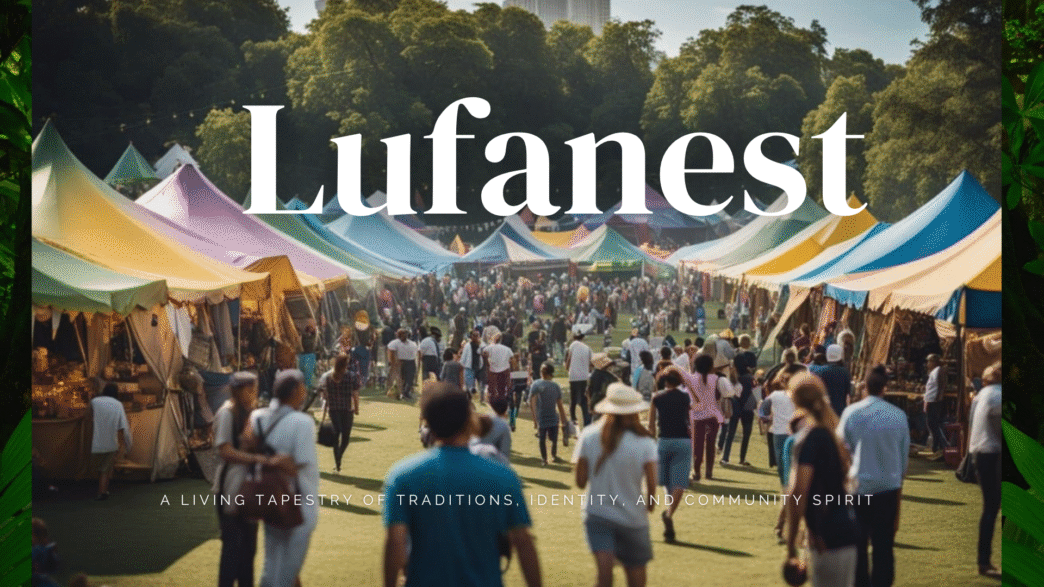Traditions are more than habits—they are bridges between generations, reminders of who we are, and celebrations of where we come from. Around the world, every culture holds on to unique customs that bind people together and give life deeper meaning. Among these, Lufanest stands out as a profound example: a living cultural tapestry woven with rituals, values, music, food, art, and stories.
Lufanest is not just a word—it is a way of life. It represents continuity, belonging, and resilience. It carries the wisdom of the past while staying flexible enough to remain relevant in the present. In an age where globalization often makes cultures blur, Lufanest thrives as a beacon of identity and togetherness.
This guide takes you deep into the heart of Lufanest—exploring its traditions, symbolism, cultural significance, and the ways it continues to enrich modern life.
Understanding the Essence of Lufanest
At its core, Lufanest is a collection of practices and traditions that define a community’s way of living. These are not random customs—they are carefully shaped by generations of experience, beliefs, and shared values. Each festival, ritual, and song within Lufanest is like a thread in a tapestry, carrying a story from the past into the present.
What makes Lufanest truly special is the balance it maintains between continuity and change. Some customs have been preserved almost exactly as they were centuries ago, while others have evolved naturally, adapting to new lifestyles and challenges. This adaptability ensures that traditions are not rigid relics but living, breathing expressions of identity.
Through Lufanest, people feel a connection not just to their ancestors, but to each other. It becomes a cultural language—a way of communicating belonging without words.
The Traditions That Shape Lufanest
Traditions are the heartbeat of Lufanest. They appear in festivals, family gatherings, religious rituals, and artistic celebrations. Each one holds symbolic meaning and reflects the community’s deepest values.
1. Festivals and Ceremonies
Seasonal festivals often bring people together in celebration of nature, harvests, or significant spiritual moments. These gatherings are marked by music, dance, colorful attire, and collective joy.
For instance, communal rituals often express unity and gratitude—people come together not only to celebrate but to reaffirm their bonds with one another and with their ancestors.
2. Food and Sharing
Food plays a central role in Lufanest traditions. Recipes are more than instructions—they are stories in edible form, passed down from generation to generation. Cooking a traditional dish can carry with it tales of survival during hard times, joy during celebrations, or the warmth of family bonds.
Sharing food during Lufanest festivals symbolizes hospitality, togetherness, and cultural pride. It is never just about nourishment; it is about identity.
3. Music, Dance, and Art
Artistic expression is at the soul of Lufanest. Whether through woven patterns, drumbeats, or folk dances, each artistic act is filled with meaning. These are not mere performances—they are embodied stories, rich with history and symbolism.
The beauty of Lufanest art lies in its collective nature. Everyone participates, from children to elders, ensuring that art is not limited to individual talent but celebrated as a communal experience.
4. Spiritual and Life-Cycle Rituals
Many aspects of Lufanest are tied to the spiritual. Birth ceremonies, weddings, harvest blessings, and even mourning rituals are deeply rooted in sacred traditions. They honor ancestors, deities, and natural cycles of life, reflecting a worldview where everything is interconnected.
Lufanest as a Source of Identity
For those who practice it, Lufanest is not just tradition—it is identity. It offers people a sense of belonging and a reminder of their roots. In today’s fast-paced, globalized world, identity can feel fragmented, but Lufanest provides grounding.
By embracing its customs, people stay connected to who they are and where they come from. Lufanest becomes a compass—a cultural guide that helps individuals navigate modern challenges without losing touch with their origins.
The Role of Storytelling in Lufanest
Stories are the invisible threads that bind Lufanest together. Elders tell tales about why a certain dance is performed, why a recipe must include a specific spice, or why a ritual is carried out in a particular way.
Through storytelling, Lufanest ensures that traditions are not practiced blindly but are infused with meaning, context, and memory. These stories transform customs into living legacies, preventing them from becoming hollow rituals.
In this way, Lufanest is not only about doing but also about remembering.
Lufanest and Community Values
At its heart, Lufanest is built on values that strengthen community life:
-
Unity – Most traditions are designed to bring people together.
-
Respect – Elders and ancestors are honored, ensuring that wisdom is passed down.
-
Generosity – Hospitality during Lufanest celebrations often extends to neighbors, visitors, and strangers.
-
Harmony – Customs reinforce mutual care and responsibility, ensuring no one is left behind.
Together, these values create a sense of collective strength. Lufanest teaches that a community is not just a group of individuals but a family woven together by tradition.
The Spiritual Dimension of Lufanest
While many Lufanest rituals are communal, their foundation is often spiritual. Ceremonies may honor natural forces, mark sacred life stages, or reflect a reverence for the unseen.
Spirituality within Lufanest is not limited to temples or shrines. It is also found in daily practices of gratitude, mindfulness, and respect. This makes Lufanest not only a set of customs but also a philosophy of living in harmony with the divine and the natural world.
Lufanest in Modern Life
One might think that traditions like Lufanest would fade in an age of smartphones and globalization—but the opposite is happening. More people, especially the younger generation, are rediscovering Lufanest as a source of balance and meaning.
Today, many communities blend Lufanest with modern lifestyles:
-
Festivals are livestreamed or shared on social media.
-
Traditional recipes are uploaded as blogs and cooking videos.
-
Music and dance traditions are fused with contemporary styles.
This adaptability shows that Lufanest is not frozen in the past—it is alive, evolving, and reaching new audiences worldwide.
Challenges and Preservation of Lufanest
Despite its resilience, Lufanest faces challenges. Urban migration, cultural blending, and the pace of modern life sometimes cause disconnection. Younger generations may see traditions as outdated unless they are explained, adapted, and celebrated creatively.
Preserving Lufanest requires:
-
Education – Teaching children the meaning behind rituals.
-
Storytelling – Keeping oral traditions alive.
-
Participation – Encouraging intergenerational involvement.
-
Innovation – Finding modern ways to celebrate age-old customs.
Through these efforts, Lufanest continues not as a museum piece, but as a living culture.
Why Lufanest Matters Today
Lufanest is more than tradition—it is a reminder of connection. It teaches unity in a fragmented world, generosity in an age of self-interest, and respect in times of forgetfulness.
It transforms ordinary life into something meaningful, turning meals into memories, dances into stories, and rituals into shared heritage. By keeping Lufanest alive, people keep alive the essence of what it means to belong—to a family, a community, and a culture.
Final Thoughts on Lufanest
Lufanest is a living tradition. It is identity, memory, art, spirituality, and community woven together. Whether expressed through grand festivals or small daily gestures, it reminds us that traditions are not obstacles to progress but bridges to deeper meaning.
In embracing Lufanest, we honor the past, enrich the present, and create a guide for the future. It is proof that while times may change, the human need for connection, belonging, and shared values never fades.
And that is why Lufanest is not just tradition—it is life itself, woven into a tapestry of stories, values, and enduring spirit.















